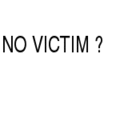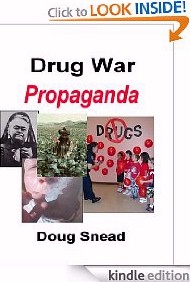Pot Shrinks Tumors - Government Knew in '74
Pot Shrinks Tumors - Government Knew in '74
By Raymond Cushing
Source: San Antonio Current
Wednesday, March 28, The United States Supreme Court rules on whether
marijuana use for medicinal purposes can be a valid defense on charges of
marijuana possession. The following article was listed as one of the top 25
censored stories of the year 2000. We reprint it here and pose the question, why
would the government want to keep us from knowing this?
The term medical marijuana took on dramatic new meaning in February 2000, when
researchers in Madrid announced they had destroyed incurable brain tumors in rats by
injecting them with THC, the active ingredient in cannabis.
The Madrid study marks only the second time that THC has been administered to
tumor-bearing animals. In 1974, researchers at the Medical College of Virginia, who had been
funded by the National Institutes of Health to find evidence that marijuana damages the immune
system, found instead that THC slowed the growth of three kinds of cancer in mice -- lung and
breast cancer, and a virus-induced leukemia.
The DEA quickly shut down the Virginia study and all further cannabis/tumor research,
according to
Jack Herer, who reports on the events in his book, The Emperor Wears No
Clothes.
In 1976, President Gerald Ford put an end to all public cannabis research and granted
exclusive research rights to major pharmaceutical companies, who set out -- unsuccessfully --
to develop synthetic forms of THC that would deliver all the medical benefits without the
"high."
The Madrid researchers reported in the March issue of Nature Medicine that they injected the
brains of 45 rats with cancer cells, producing tumors whose presence they confirmed through
magnetic resonance imaging (MRI). On the 12th day they injected 15 of the rats with THC and
15 with Win-55,212-2, a synthetic compound similar to THC. "All the rats left untreated
uniformly died 12-18 days after glioma (brain cancer) cell inoculation ... Cannabinoid
(THC)-treated rats survived significantly longer than control rats. THC administration was
ineffective in three rats, which died by days 16-18. Nine of the THC-treated rats surpassed the
time of death of untreated rats, and survived up to 19-35 days. Moreover, the tumor was
completely eradicated in three of the treated rats." The rats treated with Win-55,212-2 showed
similar results.
The Spanish researchers, led by Dr. Manuel Guzman of Complutense University, also irrigated
healthy rats' brains with large doses of THC for seven days, to test for harmful biochemical or
neurological effects. They found none.
"Careful MRI analysis of all those tumor-free rats showed no sign of damage related to
necrosis, edema, infection or trauma ... We also examined other potential side effects of
cannabinoid administration. In both tumor-free and tumor-bearing rats, cannabinoid
administration induced no substantial change in behavioral parameters such as motor
coordination or physical activity. Food and water intake, as well as body weight gain, were
unaffected during and after cannabinoid delivery. Likewise, the general hematological profiles
of cannabinoid-treated rats were normal. Thus, neither biochemical parameters nor markers of
tissue damage changed substantially during the seven-day delivery period or for at least two
months after cannabinoid treatment ended."
Guzman's investigation is the only time since the 1974 Virginia study that THC has been
administered to live, tumor-bearing animals. (The Spanish researchers cite a 1998 study in
which cannabinoids inhibited breast cancer cell proliferation, but that was a "petri dish"
experiment that didn't involve live subjects.)
In an e-mail interview for this story, the Madrid researcher said he had heard of the Virginia
study, but had never been able to locate literature on it. Hence, the Nature Medicine article
characterizes the new study as the first on tumor-laden animals and doesn't cite the 1974
Virginia investigation.
"I am aware of the existence of that research. In fact I have attempted many times to obtain the
journal article on the original investigation by these people, but it has proven impossible,"
Guzman said.
In 1983,
the Reagan/Bush Administration tried to persuade American universities and
researchers to destroy all 1966-76 cannabis research work, including compendiums in
libraries, reports Jack Herer, who states, "We know that large amounts of information
have since disappeared."
[
see also:
April 1984,
Fed Dope Bureau Censors Drug Info,
NIDA Director Purges Objective Materials As 'Outdated'
]
Guzman provided the title of the work --
"Antineoplastic activity of cannabinoids," an article
in a 1975 Journal of the National Cancer Institute -- and this writer obtained a copy at the
University of California medical school library in Davis and faxed it to Madrid.
The summary of the Virginia study begins, "Lewis lung adenocarcinoma growth was retarded
by the oral administration of tetrahydrocannabinol (THC) and cannabinol (CBN)" -- two types
of cannabinoids, a family of active components in marijuana. "Mice treated for 20 consecutive
days with THC and CBN had reduced primary tumor size."
The 1975 journal article doesn't mention breast cancer tumors, which are featured in the only
newspaper story ever to appear about the 1974 study -- in the "Local" section of The
Washington Post on Aug. 18, 1974. Under the headline, "Cancer Curb Is Studied," it read in
part:
"The active chemical agent in marijuana curbs the growth of three kinds of cancer in mice and
may also suppress the immunity reaction that causes rejection of organ transplants, a Medical
College of Virginia team has discovered." The researchers "found that THC slowed the
growth of lung cancers, breast cancers, and a virus-induced leukemia in laboratory mice, and
prolonged their lives by as much as 36 percent."
Guzman, writing from Madrid, was eloquent in his response after this writer faxed him the
clipping from The Washington Post of a quarter century ago. In translation, he wrote:
"It is extremely interesting to me, the hope that the project seemed to awaken at that moment,
and the sad evolution of events during the years following the discovery, until now we once
again draw back the veilé over the anti-tumoral power of THC, 25 years later. Unfortunately,
the world bumps along between such moments of hope and long periods of intellectual
castration."
News coverage of the Madrid discovery has been virtually nonexistent in this country. The
news broke quietly on Feb. 29, 2000 with a story that ran once on the UPI wire about the
Nature Medicine article. This writer stumbled on it through a link that appeared briefly on the
Drudge Report Web page. The New York Times, The Washington Post, and Los Angeles
Times all ignored the story, even though its newsworthiness is indisputable: a benign
substance occurring in nature destroys deadly brain tumors.
Raymond Cushing is a regular contributor to the Sacramento News & Review and the
Anderson Valley (CA) Advertiser.
Source: San Antonio Current (TX)
Author: Raymond Cushing
Published: March 29-April 4, 2001
Address: 1500 North St. Mary's Street San Antonio, Texas 78215
Copyright: San Antonio Current 2001
Contact Editor: dbennett@sacurrent.com
Website: http://www.sacurrent.com/
| 




